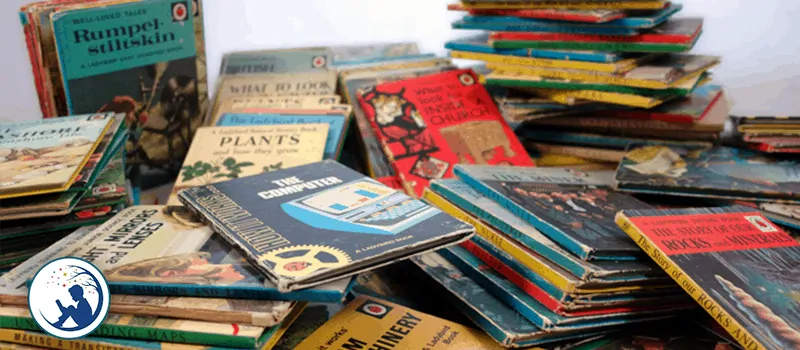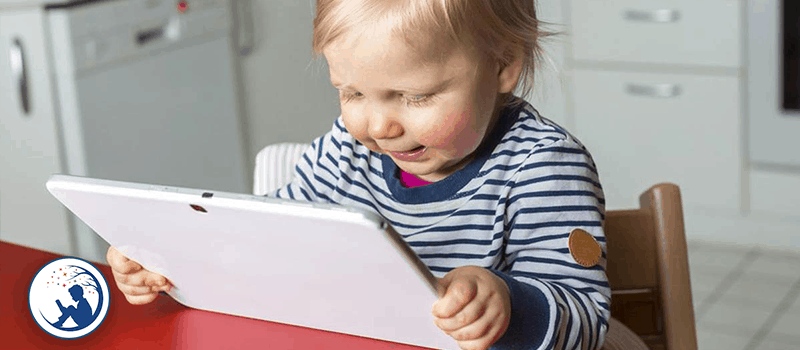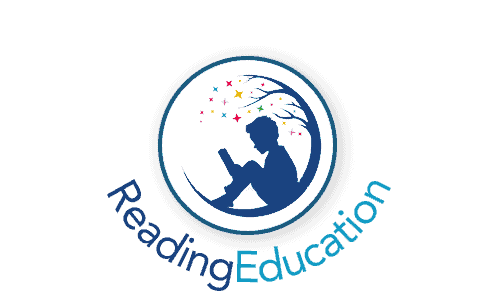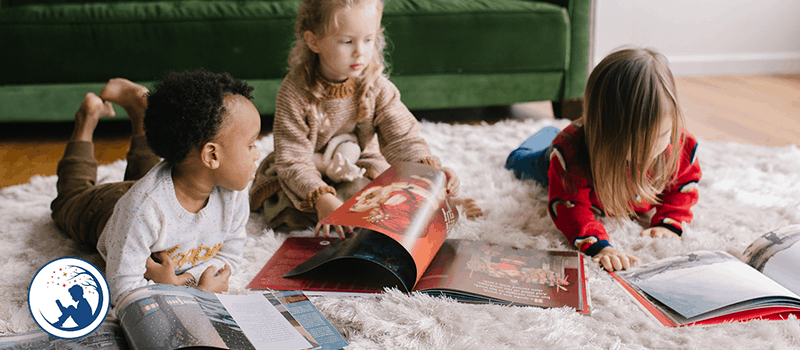If you’ve found your way to this article (welcome, by the way!), you’re no doubt interested in teaching your young child how to read – or at least begin the learning process. While there is some debate as to whether it is possible to teach children under the age of two to read, there is no doubt that an early introduction to words, languages, letters, and books will have a positive effect on their development. The question is, “What is the best way to introduce reading to a child between the ages of 0 and two?”. Well, in today’s piece, we’re going to discuss this topic and provide you with everything you need to know to give your little one the best kickstart to their reading and learning development.
Reading And Your Baby
Let’s set the scene: it’s 15 minutes before your little one’s bedtime, and you’ve decided now is an excellent time to begin reading to them before they go to sleep. You’re unsure what to expect, but you know that starting sooner is better than later, so a bedtime story will now be a mainstay of your child’s bedtime routine each and every night.
You open the book and start reading…and your baby seems very excited! They are making lots of noises – even trying to grab the book to get a closer look! Of course, you allow them to hold the book, which instantly results in lots of babbling, just as if they were trying to read the pages themself. “This is amazing!” you think to yourself. “They really do love reading!”.
At this point, your baby brings the books closer to their face…and proceed to start chewing on it like it’s a tasty bedtime snack. Don’t worry though; your child will certainly be getting more out of bedtime reading than something to nibble on!
For example, the majority of babies will enjoy books they can touch and interact with, such as those with sounds, textures, flaps, and mirrors; some babies will enjoy basic books with action language and have the ability to remember images, phrases, and sounds from their favourite books, and some babies might even enjoy longer books that contain pictures and a simple story, particularly if a pattern of repetition is present.
The question is, how do you know what type of books to buy for your child based on their age? Let’s take a look.
Buying Books For Babies and Young Children Based On Their Age

0-9 months: Reading to a baby who’s between 0-9 months old is undoubtedly an interesting and typically hilarious proposition given their tendencies to make noises when they please, grab everything in sight, and try chewing anything they can lay their little hands on! What might surprise you, however, is that less than 50% of parents read to babies within this age range a survey conducted in 2008 found that only 48% of parents read to their child before the age of one, with 65% reading to their child before the age of two, and 80% reading to their little one prior to the age of three.
At this stage of your baby’s life, books with flaps, textures, pop-ups, and things of that nature are the best option. Very young children love to touch and feel things, exploring with both hands, eyes, and mouth. When reading to them, don’t be overly concerned with turning the pages the correct way or even finishing the book. Instead, see the book as a toy that your baby can engage with.
9-18 months: It’s at this stage of your baby’s development that they will utter their first words, in addition to pointing at objects and vocalising this (usually by saying “Dat”!). Between 9 and 18 months, a child’s receptive language (the words they are able to understand) is far more expansive than their spoken language. It’s at this point where reading really becomes beneficial. According to research, babies who are frequently read to from the age of six months onwards had a 40% increase in receptive vocabulary by the time they reached 18 months of age. Babies who weren’t read to only had an increase of 16%.1
As your infant starts to learn and say new words, it is time to move on to ‘see and say’ books. These are the perfect choice for children between 9-18 months as they will enjoy pointing at pictures and learn the association between words and images.
18 months – 2 years: By the age of 18 months, your child will be ready for traditional storybooks and “real” storytime before bed. Good options here are rhyming books as they will help to train their ears to become accustomed to the sound of language and how words are spoken. It’s likely your child will want to “read” the books with you, as well as turning pages, asking questions, and wanting to go back to parts that really piqued their interest (always encourage this!). Furthermore, this is also the time when your little one might start to request specific books…which they will no doubt request you read over and over and over…and over again! Repetition will help to build a robust foundation for learning where reading and books are concerned.
Reading Activities, Games, and Tips for Children Aged Between 0 – 2 Years
Learning read, understand language and general literacy isn’t just about reading books; there are a wide array of games and actives that you can play with your child to further their development. Here are a few examples:
The ‘Noise’ Game: As the names suggests, this game involves making lots of different noises! Babies and children absolutely love hearing noises, so this is a game you can play all day, every day. When reading to your child, use sound effects, even if they don’t really fit in with the story. Animal noises, different voices for different characters, and noises that objects make are the perfect way to introduce to your child the connection between images/words and sounds.
The Library: What article about books and reading would be complete without the library being mentioned?! Ok, so the library isn’t strictly a game or activity, but they are the best place for books and reading. Period. Let your child explore the library and see which books he or she seems interested in. Let them choose their own books as much as possible, as it’s more likely they’ll stay interested in the book if they’re excited about the book itself.
Set An Example: What do babies and children love to do? That’s right; copy what their parents do! This adorable little quirk can be easily morphed into something to further their development by simply reading your own book or magazine in front of them. Don’t be afraid to indulge in a book or magazine when they’re around as being a role model, i.e. reading in their presence, is something that can have a profoundly positive impact on their literacy and reading development. The more you read with and around your child, the more likely they will want to read too.
Family Photos: Find a child-friendly photo album, i.e. plastic-coated, and fill it with lots of photos of you and your family. Children love to look through photo albums, seeing their nearest and dearest. Don’t forget to include lots of pictures of your little one too! As you look through the album, tell your baby stories about the person or people in the picture and always repeat their name. This will help your child build a connection between the person’s name and their photo. This doesn’t have to be limited to photo albums, however. You can always add name labels to photos of family members you have around your home and point them out to your child on a regular basis.
Real Word Connections: No matter where you are what you are doing, always be aware of your baby’s reaction to what is going on around him or her. If they seem incredibly excited or mesmerised by something, try to find books on that topic. For example, if you drive past a farm and your child is staring in awe at the tractors, go out and get them a tractor book! Making connections between words and real-world things is a key complement of reading development.
Online Literacy Development for Ages 0-2

In today’s world, we spend more time reading on devices such as smartphones, tablets, laptops, and desktops, than we do reading traditional reading material such as books and magazines. Therefore, your baby will grow up in an environment where reading online is part and parcel of normal, everyday life. Although it is wise to reduce or cut out screen time before the age of two, your baby will inevitably watch you whilst you’re on your phone surfing the web, scrolling through social media, or reading your latest WhatsApp messages. If your child is curious as to what you’re doing and why you’re doing it, explain what you are doing.
Digital Reading
If you think back to your reading development (or that of any child), it’s highly likely you became aware of how books worked – the purpose of the front cover, how to turn pages, how to hold the book etc. – before you actually learnt to read. Babies in today’s world are learning exactly the same thing about books. Still, in addition, they’re also learning about a myriad of text-delivery mediums, such as smartphones, tablets, laptops, e-readers, kindle and the like. Be sure to familiarise your child with technology as this will help to enhance their understanding and use of technology as they get older.
For example, if your child is sitting on your lap as you’re browsing the internet on your tablet, allow them to use the touch screen and click on things. Open up Microsoft Word or other document writing programs/apps and let them practise typing letters, helping them to spell their name and simple words. If you use video calling apps such as Skype, show them your username and contacts on the user interface itself. By doing this, you will help your child become acclimatised to specific words and phrases that are important in the digital world, just as they are in the real world on food labels and signs.
Although it is crucial for a child to have their reading foundation based in traditional reading mediums such as books and magazines, modern technology is inescapable; therefore, helping them to read and learn to use devices is a key part of the learning process. Anything you do on your phone or tablet can involve your child if you want it to. For example, if you’re looking at your calendar, invite them to look at the calendar too. You can talk to them about numbers, dates, months, and even who you’re seeing or what you’re doing on particular dates.
Learning To Before The Age of Two: A Summary
There is no doubt that introducing your child to letters, words, books, and reading between the ages of 0 and 2 is beneficial for their development, both in terms of reading and literacy in general. The key points to take away here are to involve your child in reading on a daily basis, be that reading to them, showing them what you’re reading or, ideally, both – and to make it as fun as possible! Kids love to play. They want to enjoy themselves doing what they want, when they want, so by making reading and learning about words and letters as fun as possible, you grab their attention and make them want to learn!
1. Reading with children starting in infancy gives lasting literacy boost. (2020). AAP News. (online0 Available at: https://www.aappublications.org/news/2017/05/04/PASLiteracy050417#:~:text=SAN%20FRANCISCO%20%E2%80%93%20New%20research%20at

